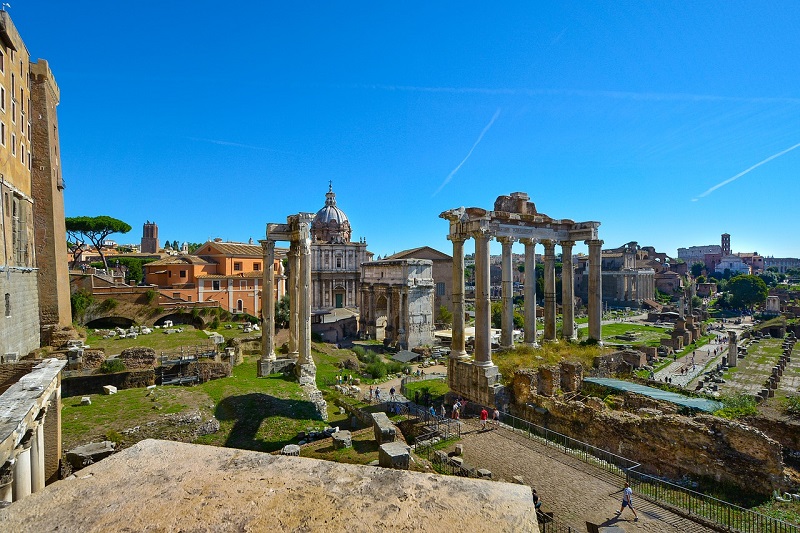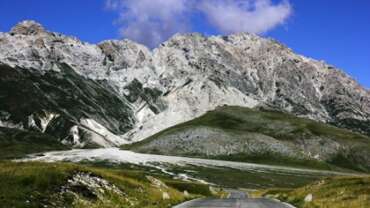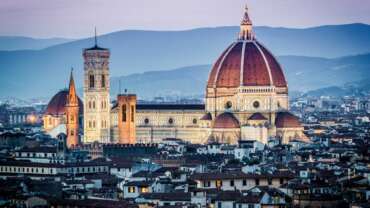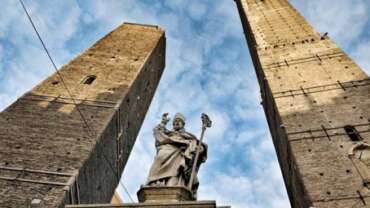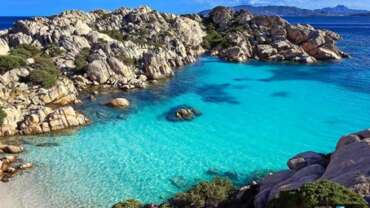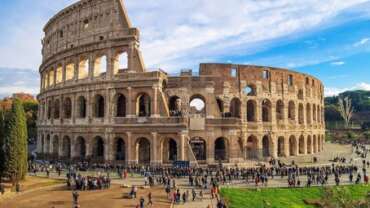UNESCO Sites in Italy
Lazio – The Historic Centre of Rome, the Second World Heritage in Italy since 1980
The Roman UNESCO Heritage: from the Colosseum to the Trevi Fountain, the Basilica of Santa Maria Maggiore, the Imperial Forums, Piazza di Spagna, Via Veneto, the Capitol, Piazza Venezia and the timeless places of the Eternal City.
UNESCO Heritage
Italy, as we all know, is the country that alone holds approximately 70-75% of the world’s artistic and cultural heritage. UNESCO, the United Nations Educational, Scientific and Cultural Organisation, is committed to protecting, safeguarding and promoting the sites of exceptional value and beauty registered as World Heritage Sites. Together with China, our country holds the record for the largest number of World Heritage Sites in the world, boasting no less than 55 properties, distributed in different regions.
The six UNESCO World Heritage Sites of Latium
Here as follows, the 6 current sites of Latium recognised on the World Heritage List:
– Historic Centre of Rome (included in 1980), the Properties of the Holy See in that City Enjoying Extraterritorial Rights and Basilica of San Paolo Fuori le Mura (then included in 1990)
– Villa Adriana (Tivoli, in the Province of Rome) included in 1998;
– Villa D’Este (Tivoli, in the Province of Rome) included in 2001;
– Etruscan Necropolises of Cerveteri (also known as Banditaccia) and Tarquinia (also known as Monterozzi) included in 2004;
– Machine of Santa Rosa (Viterbo) included in 2013 as part of the Intangible Cultural Heritage of Humanity;
– Monte Raschio beech forest (located at Oriolo Romano, inside the Regional Natural Park of Bracciano and Martignano) and Monte Cimino beech forest in Soriano del Cimino, both part of the Ancient and Primeval Beech Forests of the Carpathians and Other Regions of Europe included in the list in 2017.
The historic centre of Rome as UNESCO World Heritage Site
The historic centre of Rome was inscribed on the UNESCO list in 1980 during the work of the 4th session of the Commission in Paris, and was recognised as a World Heritage Site due to the following criteria:
criterion I: The property includes a series of testimonies of incomparable artistic value produced over almost three millennia of history;
criterion II: over the centuries, the works of art found in Rome have had a decisive influence on the development of urban planning, architecture, technology and the arts throughout the world;
criterion III: the value of the archaeological sites of Rome, the centre of the civilization, is universally recognized;
criterion IV: the historic centre of Rome as a whole, as well as its buildings, testifies to the uninterrupted sequence of three millennia of history;
criterion V: for more than two thousand years, Rome has been both a secular and religious capital, being the basis of Western Culture.
Subsequently, in 1990, upon request of the Holy See the Site was finally extended to the he Properties of the Holy See in that City Enjoying Extraterritorial Rights and to the Basilica of San Paolo Fuori le Mura.
A journey of about 3000 years
There is no doubt that the historic centre of Rome is a complex of structures and buildings of inestimable value that winds its way inside the city walls (with the exception of the Basilica of San Paolo which, as its name indicates, is located outside the Aurelian walls), covering about three millennia of history.
A journey through time, from the monuments of ancient Rome such as the Colosseum, Palatine, Roman Forum and Imperial Forums, through the urban projects of the Renaissance and Baroque eras, up to modern times (think of the trident connecting Piazza del Popolo to Piazza di Spagna). An incomparable stratification of centuries of history, where the sacred and the profane cohabit and coexist between religious buildings (the three Major Basilicas: Santa Maria Maggiore, San Giovanni in Laterano and San Paolo Fuori le mura) and structures for civil use (Campidoglio, Palazzo Farnese, Palazzo del Quirinale and the Ara Pacis) that guard riches (both pictorial and sculptural) created by the greatest artists of all times.
Lazio – Villa Adriana in Tivoli, World Unesco Heritage Site from 1999 not far from Rome
Emperor Hadrian’s suburban home, a stone’s throw from Rome
Villa Adriana complex in Tivoli
Listed as a UNESCO World Heritage Site in 1999, Villa Adriana (Hadrian’s Villa) stands in the municipality of Tivoli in the Province of Rome between the slopes of the Tiburtini Mountains and the Roman countryside. As its name suggests, it was the suburban residence of Emperor Hadrian, who chose the green and water-rich territory of ancient Tibur.
The construction of the complex took place between 118 and 138 A.D. and covered about 120 hectares, including residential structures, baths, nymphaea, pavilions and gardens. Currently, the area that can be visited is only about 40 hectares compared to the original 120.
The beauty and majesty of Villa Adriana, which has been object of systematic study since the Renaissance, are due to the highly original and extraordinary sculptural and architectural works, as well as to the coexistence of the architectural traditions of ancient Greece, Rome and Egypt.
Villa Adriana recognition as a Unesco World Heritage Site in 1999
The archaeological area of Villa Adriana, recognised as a World Heritage Site, includes all the essential elements that contribute to the recognition of the site as having outstanding universal value, for the following criteria.
Criterion I: Villa Adriana is a masterpiece combining the highest expression of the material cultures of the ancient Mediterranean world;
criterion II: the study of Villa Adriana monuments played a fundamental role in rediscovering elements of classical architecture during Renaissance and Baroque. It also exerted an undeniable influence on many 19th and 20th century architects and designers;
criterion III: Villa Adriana represents the exceptional survival of the Ancient Roman Empire. The large number of buildings and structures inside, the collection of statues and sculptures decorating the area demonstrate the taste and erudition of one of the greatest Roman Emperors. Hadrian, a clever and cultured man, personally supervised the construction of the villa, inspired by his travels around the boundless empire, bringing back and reintroducing the best of different cultures into the complex itself.
The 4 main nuclei of Villa Adriana archaeological area
The residence was conceived to satisfy multiple needs and functions such as residence, representation and service. The configuration of the numerous structures in the area reflects the innovative ideas of the emperor in the field of architecture and it is commonly recognised that Hadrian wanted to reproduce in his villa the places that had impressed him most during his travels in the provinces of the empire.
The majestic complex, apparently lacking in a structured plan, is instead well organised and articulated in four distinct nuclei:
– the Greek Theatre and the Temple of Cnidian Aphrodite
-the Maritime Theatre, the Imperial Palace, the Winter Palace, the Latin and Greek Libraries and the Golden Square.
-the Small Baths, the Large Baths and the Baths with Heliocaminus.
– the Nymphaeum, Roccabruna Tower and the Academy.
Greek Theatre and Temple of Cnidian Aphrodite
The Greek Theatre is part of the first nucleus. In fact, despite its name, it has the typical characteristics of Roman theatres with a semicircular plan. Its small size suggests that it was intended for a very small audience, probably the Emperor’s guests. Built taking advantage of the hilly morphology of the tuff soil, we can still recognise the stepped course of the cavea (a semicircular stand for spectators), divided into two sectors and crossed by a partially visible central stand, at the top of which there is a small rectangular room. There are various hypotheses about the function of this rectangular space: according to some it was a small temple dedicated to some god, as for all ancient Roman theatres, while for others it would have been a tribune of Hadrian. Under the cavea, it is still possible to distinguish the orchestra (the space dedicated to the chorus) and the proscenium or stage where the actors played, rectangular in shape and intact only in its lower part. Unfortunately, nothing has survived to this day of the structures of the frons scenae, the fixed masonry backdrop used for stage effects, with several floors and with doors and windows which delimited the stage area, among other things. Furthermore, it seems that the two marble herms depicting Tragedy and Comedy found during excavations in the eighteenth century, now in the collections of the Vatican Museums, originally belonged to the decoration of the theatre. However, as most of the findings of the Villa, it is not possible to state their attribution.
Overlooking the Valley of Tempe, the Temple of Cnidian Aphrodite is a small circular temple in Doric style that originally housed a copy of the statue sculpted by the famous Praxiteles. Currently kept in the Antiquarium Museum, a cast was placed in its place. The temple, like all Roman temples, does not rest on a high podium but on a crepidoma of four steps and consists of 16 columns, an element of clear Greek inspiration.
However, the current appearance of the complex gives us a rather partial picture of it, due to the building of the Casino Fede structure during the eighteenth century.
Maritime Theatre, Imperial Palace, Winter Palace, Latin and Greek Libraries and Golden Square
The second key node is the Maritime Temple, the Imperial Palace, the Winter Palace, the Latin and Greek Libraries and the Golden Square.
The Maritime Theatre, also known as Villa dell’Isola, is one of the first structures built in the complex around the year 118 AD. It is one of the most remarkable monuments of Villa Adriana Villa, original, unique and innovative in its architectural layout.
It is a circular structure with a portico overlooking a water channel in the middle of which there is an artificial island with a diameter of 45 m, where shows were probably performed.
Moreover, there was a small domus that was probably a sort of minor residence where the emperor retired for his artistic activities. The islet was accessed by two rotating wooden structures, giving it a separate character from the rest of the complex, maybe a private and reserved part of the palace. The name ‘maritime’ derives from a marble frieze with a marine subject that decorated the entablature. A circular body preceded by a pronaos opening onto a portico, also circular, supported by Ionic columns and covered by a barrel vault. The interior space is perfectly optimised to create all the rooms for the emperor’s needs. The structure, in fact, reflects the typical layout of the domus in each of its elements: atrium, courtyard, portico, tablinum, cubicle, baths and even latrines. A real “miniature”, capable of combining the functional aims of the project and adapting the space in an aesthetic sense.
As we can imagine, the Imperial Palace is the main building of the whole Villa Adriana area, where Hadrian lived with his court. It is composed of large peristyles, commonly called the Golden Square, the Doric Atrium, the Great Peristyle and the Courtyard of the Libraries.
The Golden Square is a large area surrounded by a portico, with a peristyle of alternating columns of cipolin and granite, with rooms built around a large octagonal hall. This is probably where banquets were held.
The Doric atrium is a large hall on two levels, with a portico of fluted pillars that contained a sumptuous triclinium and other meticulously decorated rooms. Crossing the peristyle of the palace, we reach the courtyard of the Libraries, 66 metres long and 51 metres wide, surrounded by a portico of Corinthian columns. These buildings frame a courtyard with a portico of Corinthian columns. One part is made up of bedrooms, while on the other side of the courtyard we found the Greek and Latin Libraries.
Lombardy – Rock Drawings in Valcamonica, in Lombardy the first Italian Unesco World Heritage Site
In Val Camonica, you discover that art was born first. Since the beginning, this was an urgent need also for magical, religious and superstition reasons. If you visit these places, you are catapulted into a very ancient age, dating back to even before any complex civilization. Before the Greeks and Romans, before any ancient emperor, before Plato, Hercules, Aristotle or Cicero.
We can learn a lot by visiting Val Camonica, the place par excellence in Italy to admire the cave paintings. In fact we can immediately say that more than paintings, it is instead of engravings or technically we speak of “petroglyphs” or even simply “graffiti”. The landscapes in the surroundings are unmissable: natural and archaeological parks and reserves.
We find ourselves in a valley immersed in the charm of time before time, inhabited and cared for by an archaic, simple, prehistoric people, who, however, have left us tangible signs of art and beauty. Of the “signs” precisely that Unesco in 1979 recognized as a World Heritage Site, all to live, know, preserve, protect and admire.
The ancient engravings of the Valley
Obviously we are in Val Camonica, in Lombardy, a region of Northern Italy. In the easternmost area in the provinces of the city of Brescia. The area more precisely corresponds to about 24 municipalities, which have the task of guarding an enormous wealth that has crossed the millennia up to us.
The first traces of civilization visible in this area date back to the Copper Age, over 13 thousand years ago, when after a great glaciation the valley immersed in the Alps was permanently inhabited by a population of uncertain origin: the Camuni.
These people have left more than 30 thousand rock engravings, especially in the period around 8 thousand years ago, when they entered the so-called Iron Age and men had learned to forge metals to use them both for hunting and for building tools more resistant over time.
These traces give us remarkable indications about life at the origins of humanity and represent one of the most concrete testimonies of prehistory in Italy.
Val Camonica, the map of the sites of the prehistory
The Camonica Valley is a complex set of wonders; in those territories there are eight parks of prehistoric archaeology equipped for visits, and a system of ten archaeological and ethnographic museums scattered in as many municipalities.
To this beauty is united that one of various medieval suburbs like Bienno, Lovere, Pescarzo, of wonderful castles like that one of Breno, sanctuaries, churches until thermal localities like Boario or Angolo Terme. In all these places it is immediately visible the great cultural heritage that from prehistory becomes our contemporary.
In order to visit them all it is necessary to go up again toward north taking as reference the lake of Iseo. Doing so we meet first the park of supra-municipal interest of Lago Moro, Luine e Monticolo in the municipality of Boario Terme, where there are two sites of great interest: Parco di Luine and Parco dei Corni freschi.
Proceeding northwards we meet the archaeological park of Asinino-Anvòia in the municipality of Ossimo where it is possible to walk inside a luxuriant nature, and among the chestnut trees looking for prehistoric engravings and graffiti. In the park there are also small stems of white stone on which are visible the ancient “signs”.
Also at the Natural Reserve Rock Engravings of Ceto, Cimbergo and Paspardo it is possible to make incredible walks, enjoying the immense green of Val Camonica. The paths here are marked in detail. The didactic communication is well present and is able to tell by merging together: Rock Art, Ethnography and Human Archaeology.
The National Park of rock engravings of Naquane was one of the first sites to be discovered and the first of these to be inscribed in the Unesco heritage. In this location are the oldest engravings dating back over 13 thousand years ago. A magical place, absolutely to know.
A smaller park, but not less interesting, is the National Archaeological Park of the Massi di Cemmo where the traces of the Camonica civilization are present close to the mountains.
Not far from this there is the Archaeological Park of Seradina-Bedolina where you can enjoy exceptional mountain views, venturing between these ancient ways. The quality of the signs here is incredible and the first “images” of the domestication of the horse are also visible.
The path of the municipal archaeological-mining park of Sellero has rock engravings that are among the most “recent” compared to those found in the nearby archaeological areas. The most recent of them date back to the II-III century B.C. and depict the classic scenes with animals, fighting, war and hunting.
A walk a little more challenging than the others is the Multipath of the “Coren delle Fate”. The path is wilder and has less signage than the others but the area arouses the same great interest and the same immense emotions.



